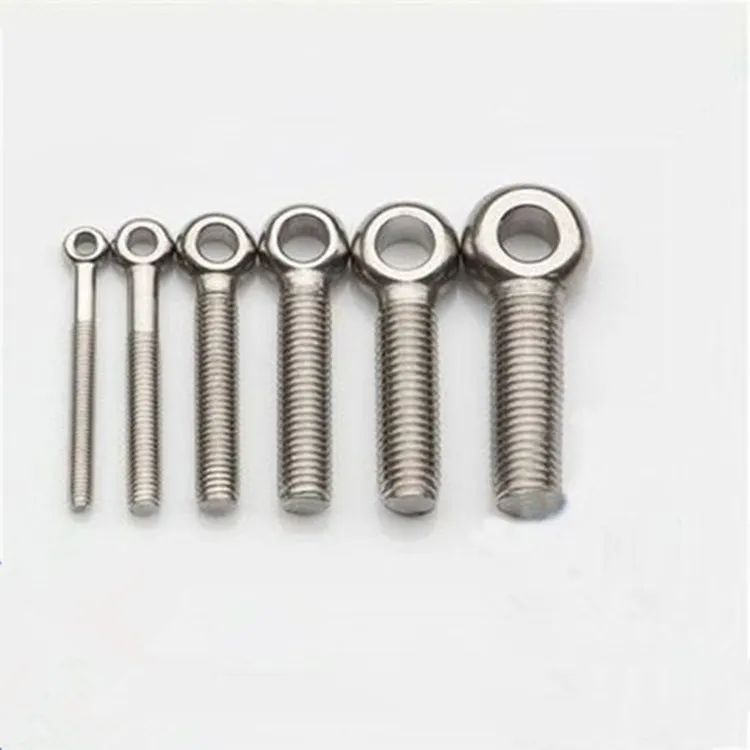

weld studs for concrete
Kas . 13, 2024 00:33 Back to list
weld studs for concrete
Understanding Welded Studs for Concrete A Comprehensive Overview
Welded studs for concrete have become an essential component in modern construction practices, providing a reliable method for achieving strong and durable connections between steel and concrete structures. These innovative fastening solutions are utilized in various applications, ranging from buildings and bridges to industrial facilities and precast concrete products. This article delves into the mechanics, benefits, applications, and installation processes of welded studs tailored for concrete.
What are Welded Studs?
Welded studs are cylindrical metal rods that are attached to metal surfaces via a welding process. In the context of concrete, these studs are primarily used to create a mechanical bond between the steel reinforcement and the concrete. When a stud is welded onto a steel plate or other structural elements, it serves as an anchor point to which concrete can adhere. This connection is vital for ensuring load transfer and overall structural integrity.
The Welding Process
The most common welding techniques for attaching studs include arc welding and resistance welding. The process begins with cleaning the surface of the steel to remove any contaminants that may impede the welding process. Once the surface is prepared, the stud is positioned, and weld electrodes are applied. The welding machine generates heat, melting the base metal, and fusing the stud to the surface.
The quality of the weld is critical to its performance. Properly executed welds result in strong mechanical bonds that can withstand significant loads. Therefore, it’s essential for constructors to follow industry standards and conduct quality checks throughout the installation.
Benefits of Using Welded Studs
1. Enhanced Load Distribution One of the primary advantages of welded studs is their ability to distribute loads more evenly across the concrete surface. This characteristic significantly reduces the risk of cracking or damage in the concrete, especially under dynamic or impact loads.
2. Increased Structural Strength By forming a strong bond between concrete and steel, welded studs enhance the overall structural strength of the assembly, making the entire structure more resilient to various stresses, including compressive and tensile forces.
3. Cost-Effective Solution The use of welded studs can lead to substantial cost savings over time. The increased strength and durability minimize the need for repairs and reinforcements, reducing lifetime maintenance costs.
4. Versatility Welded studs can be used in a broad range of applications, including mounting HVAC systems, supporting flooring systems, and securing precast elements, making them a versatile choice for engineers and builders.
weld studs for concrete

Applications in Construction
Welded studs are extensively used in various areas of construction. In particular, they play a significant role in
- Composite Steel Decking In composite structures where steel decking is used in conjunction with concrete, welded studs help create a composite action, allowing the materials to work together efficiently
.- Precast Concrete Elements When manufacturing precast concrete components, studs can be welded onto the steel framework, ensuring a secure bond when the concrete is poured.
- Bridges and Roads In transportation infrastructure, welded studs help reinforce the connections between bridge decks and girders, enhancing safety and performance under heavy traffic loads.
Installation Considerations
For successful installation of welded studs in concrete, several factors should be considered
1. Quality Control Regular inspections during the welding process are necessary to ensure the integrity of the connections. Non-destructive testing methods can be employed to check for defects in the welds.
2. Material Compatibility The materials used in welded studs and the receiving surfaces must be compatible. Different types of metals may require specific welding techniques or consumables.
3. Environmental Conditions Installation should be conducted under favorable weather conditions to prevent moisture or temperature fluctuations from affecting the weld quality.
Conclusion
Welded studs for concrete represent a powerful solution for enhancing the stability and strength of construction projects. Their reliability, cost-effectiveness, and versatility make them invaluable in a variety of applications. As construction technology continues to progress, the use of welded studs will likely expand, leading to safer, more efficient structures that stand the test of time. Embracing this technology allows engineers and builders to harness the full potential of steel and concrete machinery, ensuring successful project outcomes for years to come.
Latest news
-
Premium Fasteners Manufacturer | AI-Driven Solutions
NewsAug.01,2025
-
Hot Dip Galvanized Bolts - Hebei Longze | High Strength, Corrosion Resistance
NewsAug.01,2025
-
High-Strength Hot Dip Galvanized Bolts - LongZe | Corrosion Resistance, Custom Sizes
NewsAug.01,2025
-
Best Self Tapping Screws for Drywall - Fast & Secure Installation
NewsJul.31,2025
-
High-Strength Hot Dip Galvanized Bolts-Hebei Longze|Corrosion Resistance&Customization
NewsJul.31,2025
-
Hot Dip Galvanized Bolts-Hebei Longze Metal Products|Corrosion Resistance&High Strength
NewsJul.31,2025

